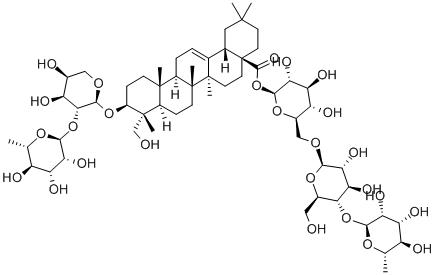-
Categories
-
Pharmaceutical Intermediates
-
Active Pharmaceutical Ingredients
-
Food Additives
- Industrial Coatings
- Agrochemicals
- Dyes and Pigments
- Surfactant
- Flavors and Fragrances
- Chemical Reagents
- Catalyst and Auxiliary
- Natural Products
- Inorganic Chemistry
-
Organic Chemistry
-
Biochemical Engineering
- Analytical Chemistry
- Cosmetic Ingredient
-
Pharmaceutical Intermediates
Promotion
ECHEMI Mall
Wholesale
Weekly Price
Exhibition
News
-
Trade Service
Reporter genes are commonly used m prokaryotes and eukaryotes to measure promoter activity of a gene of interest Transgenic organisms have to be generated by transformation with a chimertc gene consisting of the respective promoter and the coding sequence of the reporter gene. The activity of promoters can be studied by gene fusions without interference of the regulatory 3’ or intron sequences that might be present in the endogenous gene. Therefore, gene fusions are an important tool m transgenic research for promoter evaluation. The β-glucuromdase gene (
gusA
or
uidA
), isolated from Escherichia coli, has been exploited over many years to monitor plant promoter activity. In situ enzyme histochemical methods are used to localize the cells expressing the reporter gene within the cellular context of the explant or tissue. A qualitative hrstochemical assay to measure GUS activity is based on the substrate 5-bromo-4-chloro-3-mdolyLl3-o-glucuronide (X-Glut) (
1
). The GUS enzyme hydrolyzes X-Glut to a water-soluble mdoxyl mtermedtate that is further dimerized into a dichloro-dibromo-indigo blue precipitate by an oxidation reaction (Fig. 1 ). However, this reaction has a serious drawback. Halogen-substituted mdoxyls liberated at the site of high enzyme activity can diffuse widely before complete oxidation to insoluble indigo blue can take place. This is especially true at lower pH (<9.0) (
2
–
4
). The indoxyl dimenzation can be enhanced by the presence of the oxidant potassium ferri(III)cyanide (
5
). In optimal reaction conditions, the water-insoluble indigo blue is located at the place of enzyme activity (
6
). The X-Glut-based assays that are usually done on intact seedlings, explants, or vibro-sliced tissues suffer from a low histological and cytological resolution, unequal permeabtitty of different cell types for the reaction substrates, diffusion of the reaction intermedtates from the enzyme location, and uncontrolled reaction conditions in the intact cells, such as the cytoplasmtc pH value and the presence of oxidizing or reducing compounds Moreover, localization artifacts might be observed owing to enhanced dimerization of the mdoxyl intermediates at sites in the tissue with high peroxtdase activity (
6
,
7
). Also, artifacts might occur at the level of the gus gene expression. Promoter activity might be induced by mechanical, anaerobic, salt, or osmotic stresses generated during manipulation of the explants or during incubation in the enzyme reaction mix.Fig. 1.
Chemistry of X-Glut reaction Hydrolyzation of X-Glut by the ϟ-glucurontdase enzyme results in a reactive mdoxyl molecule. Two mdoxyl molecules are oxidized to indigo blue; fem(III)cyanide enhances the dimerization.







